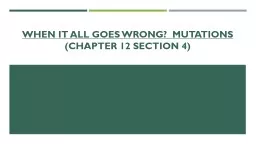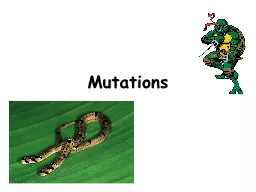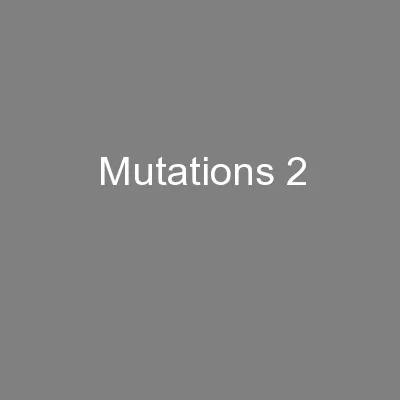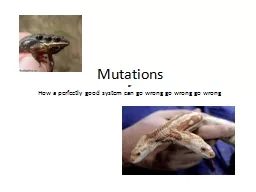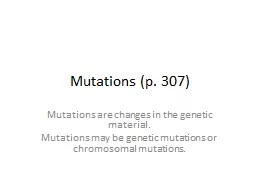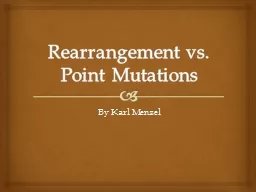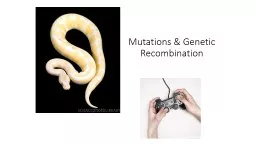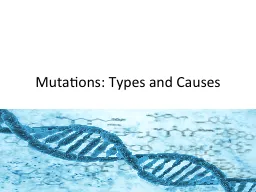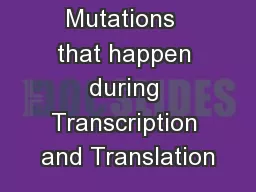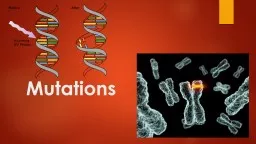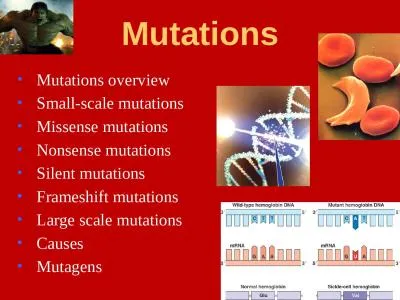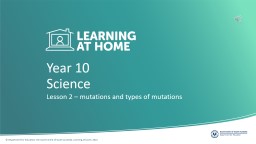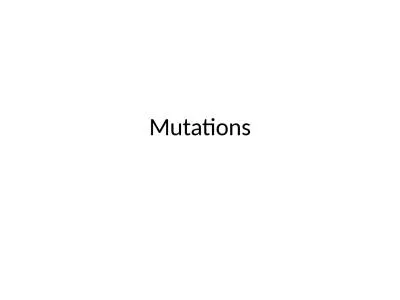PPT-When it all goes wrong? Mutations
Author : liane-varnes | Published Date : 2019-02-12
Chapter 12 Section 4 Mutation A Change in Genetic Information Causes can be 1 Genetic DNA proofreader does not catch mistakes in Replication or Protein
Presentation Embed Code
Download Presentation
Download Presentation The PPT/PDF document "When it all goes wrong? Mutations" is the property of its rightful owner. Permission is granted to download and print the materials on this website for personal, non-commercial use only, and to display it on your personal computer provided you do not modify the materials and that you retain all copyright notices contained in the materials. By downloading content from our website, you accept the terms of this agreement.
When it all goes wrong? Mutations: Transcript
Download Rules Of Document
"When it all goes wrong? Mutations"The content belongs to its owner. You may download and print it for personal use, without modification, and keep all copyright notices. By downloading, you agree to these terms.
Related Documents

